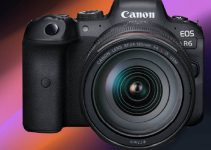The cinema camera that put Canon on the map was the original C300. A great size, well thought out controls, and top-notch image quality provided by a Super 35mm sensor put it on top for low- to mid-range budge productions and even some high-end shoots. The latest version – the C300 Mark III – looks like a worthy continuation of the series.
For a closer look, ProAV TV got their hands on a pre-production C300 Mark III and put it through its paces. This is an important camera, and people are expecting a lot out of it after the release of the C500 Mark II quite recently.
Looking at one of the best changes is a significant improvement to slow motion recording. The C300 Mark III can now hit 120 fps in 4K. And thanks to the sensor design it uses the entire area.
You can even record in raw and they point out a button on the side of the camera that makes the changes incredibly easy to do on the fly. Not only did Canon add these features, they made them work well – even autofocus works.
Showing off some sample footage proves that this camera is going to be an amazing performer. The video is detailed and clean. There also seems to be plenty of dynamic range.
Making all this change possible is a completely new sensor. It is still a Super 35mm format compared to the full-frame C500 Mark II but the architecture and design are a match. It looks like a crop of the C500 sensor in fact since it has a native 4K resolution instead of the 5.9K of its larger brother. The new trick in the C300 is DGO, or Dual Gain Output.
What is Dual Gain Output? While it sounds like dual native ISO, it’s actually a little different technology. Dual native ISO refers to how some cameras can switch between two circuits to adjust the gain of the image at the sensor level. This gives you two modes.
DGO works in a similar way, with two different circuits, but reads them out simultaneously. By combining all this information you increase the usable dynamic range and minimize noise. It’s always active except when you go above 60 fps.
Another nice quality of life addition is false color. It can be set to a side button and can help judge the exposure with a higher degree of accuracy.
Formats have received a slight change from the last model. The C300 Mark III can record in Canon RAW, Canon RAW Light, or XF-AVC. The XF-AVC now has a choice between All-I (intraframe) for higher quality and larger files or Long GOP (interframe) for more compression.
This makes it viable for broadcast, documentary, or traditional film shoots. The Mark III did lose the 12-bit Full HD setting, but raw should be able to fill in there when needed.
In what seems to be a major shift in the camera’s physical design is the modularity of the camera’s body. There are various modules that can be attached and accessories to make the system even better.
You can swap out lens mounts, use Canon’s viewfinder, and add extension modules. For broadcast and live product especially the EU-V2 Expansion Unit 2 will be a critical addition.
The C300 Mark III looks like it’s a winner. Are you looking at picking one up? Any questions still about the camera’s features? Meanwhile, the predecessor Canon EOS C300 Mark II just got an additional $500 price drop currently selling for $7,499.
[source: ProAV TV]
Order Links:
Disclaimer: As an Amazon Associate partner and participant in B&H and Adorama Affiliate programmes, we earn a small comission from each purchase made through the affiliate links listed above at no additional cost to you.




